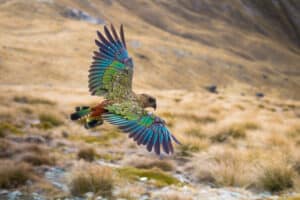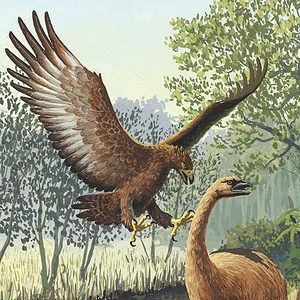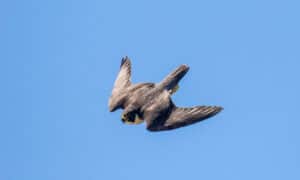Blue is often considered one of the rarest colors in nature but there are numerous birds with brilliant blue plumage. Is blue as rare for feathers as it is for other types of animal skin, fur, or scales? We’re going to make a list of the rarest to most common plumage that you’ll find in nature.
The color of a bird’s feathers comes down to the pigments that are in them. The pigments in the feather impact how light is absorbed, which results in color. Human hair, skin, and eye color work the same way. Melanins are responsible for brown, black, and gray. Carotenoids result in bright red and yellow feathers. Porphyrins can also produce red, as well as brown, and some green colors. Each of these pigments represents a class of specific, specialized pigments. The exact combination and amount of pigments will dictate the bird’s coloring.
Blue and white, as well as some green feathers, are actually the result of a trick of the light and not pigments. This is called structural coloration. This happens when microscopic structures at the cellular level change the way that light goes through the surface. Iridescence is similar but also involves melanin, the pigment responsible for black coloring.
White
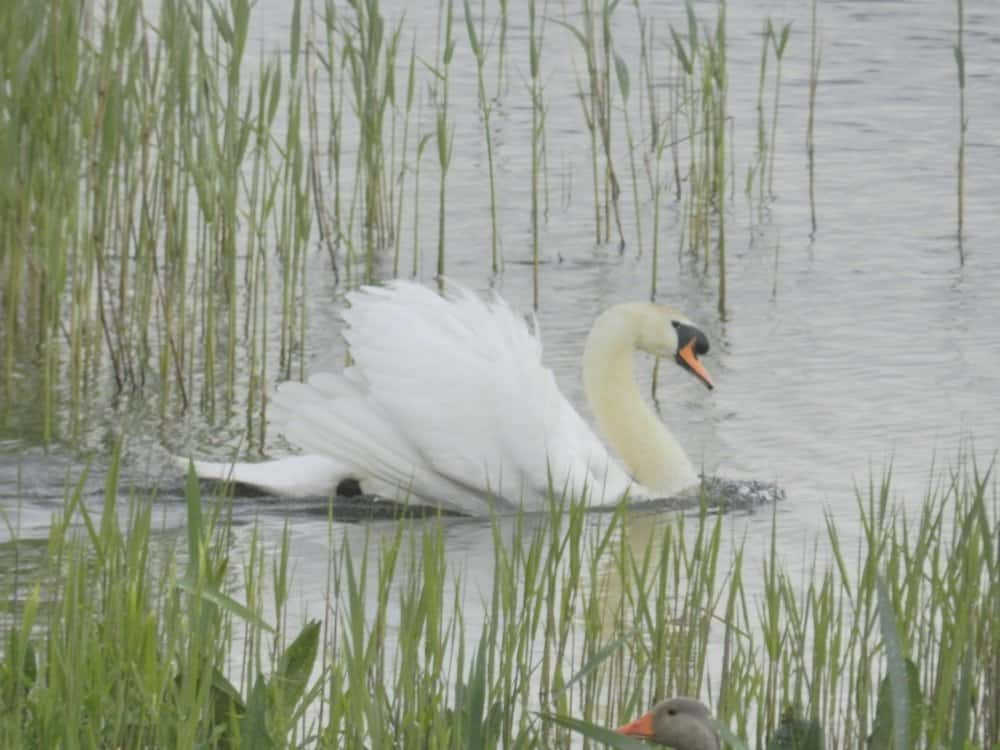
Swans have bright white feathers as adults.
©Millie Bond – Copyright A-Z Animals
Many birds have white feathered sections or patterns but all-white plumage is very rare in the wild. Why is white such a rare color? The main reason is that white makes most birds stand out in their environment, making them more vulnerable to predators. Feather coloring can help a bird blend into their surroundings. Many of the white bird species live in snowy habitats. One of the best-known white birds, the swan, is found in all continents other than Africa and Antarctica.
Of course, white patterns are quite common. Many birds with other colored feathers have small sections, often on their chests or wings, with white feathers. White downy feathers are also common in chicks of many bird species, even if they grow into other colored feathers as they mature.
Purple
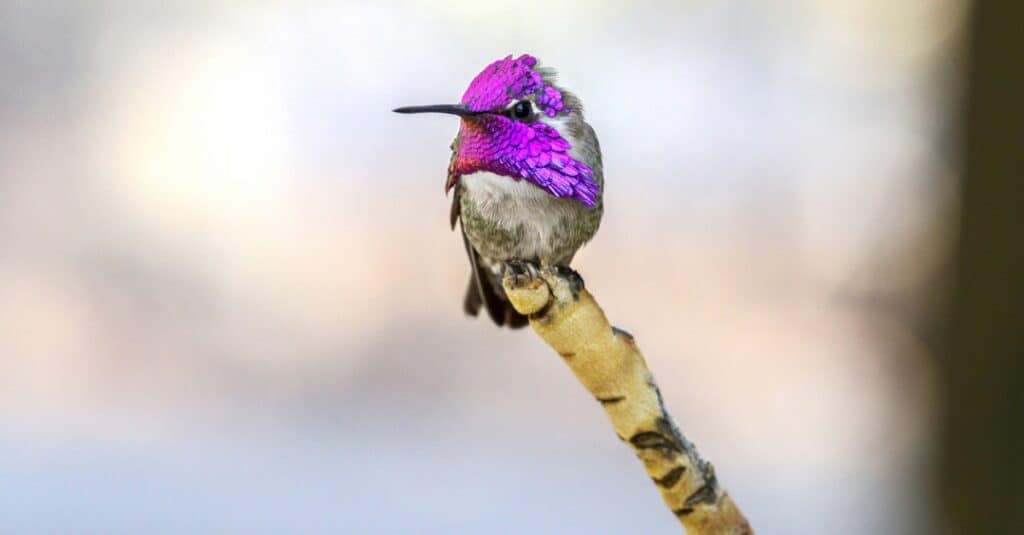
Unlike this male, the female Costa’s hummingbird doesn’t have purple feathers.
©iStock.com/Monica Lara
Like white and blue, purple is the result of structural coloration. Purple is not a very common feather color, although it does still occur. The violet-backed starling has some of the most brilliant and plentiful purple plumage. Other purple birds have smaller sections of purple as well as other colors. Many purple feathers are also iridescent.
Blue
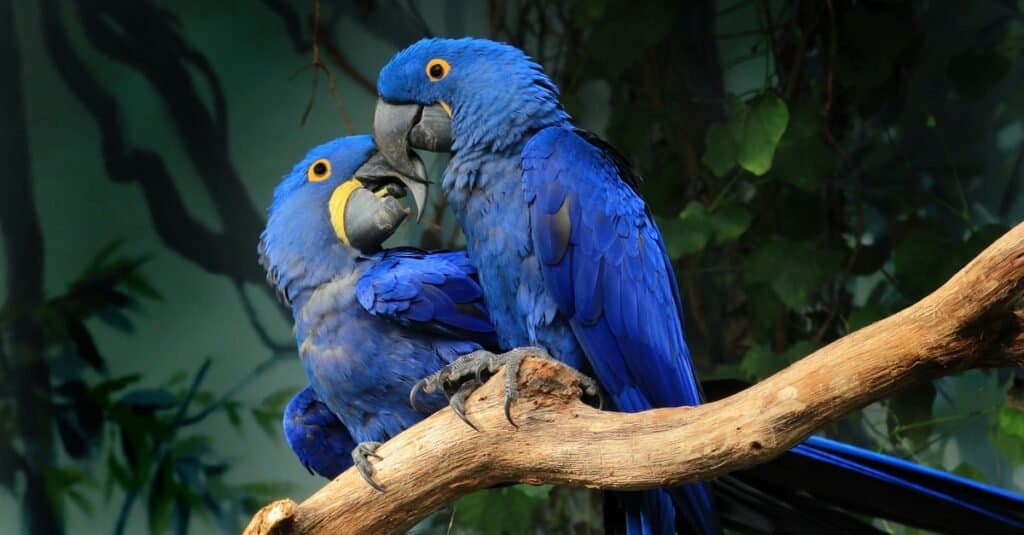
The hyacinth macaw is the largest macaw and is easy to recognize thanks to its bright blue plumage.
©Vaclav Matous/Shutterstock.com
Blue is another rare feather color. The hyacinth macaw has some of the richest blue coloring while the brilliant bluebird has bright feathers. Many birds with blue feathers have gray-blue or dusty blue plumage, rather than bright blue. Tropical birds tend to have brighter blue coloring while birds that live in snowy or temperate areas have slightly duller blue coloring.
Pink
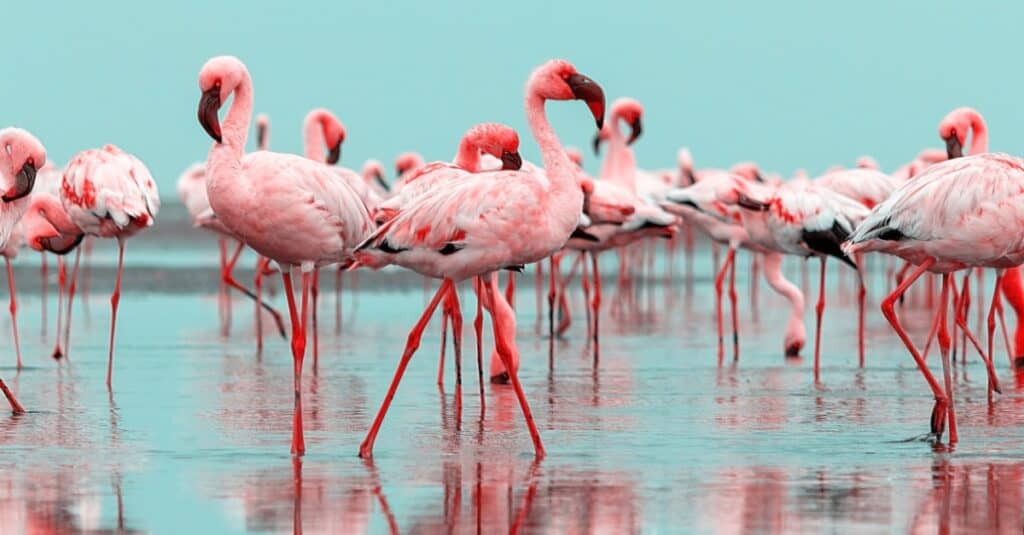
Flamingos are known for their pink feathers, which they don’t develop until they are adults.
©iStock.com/YULIIA LAKEIENKO
One of the most recognizable birds with pink feathers is the amazing flamingo. However, when they are born, flamingos are gray or white with fluffy down. As they grow, their characteristic pink feathers come in, usually by the time they are 2 or 3 years old. Other birds with pink coloring include some varieties of cockatoos, the roseate spoonbill, and male pine grosbeaks.
Orange, Yellow, and Red
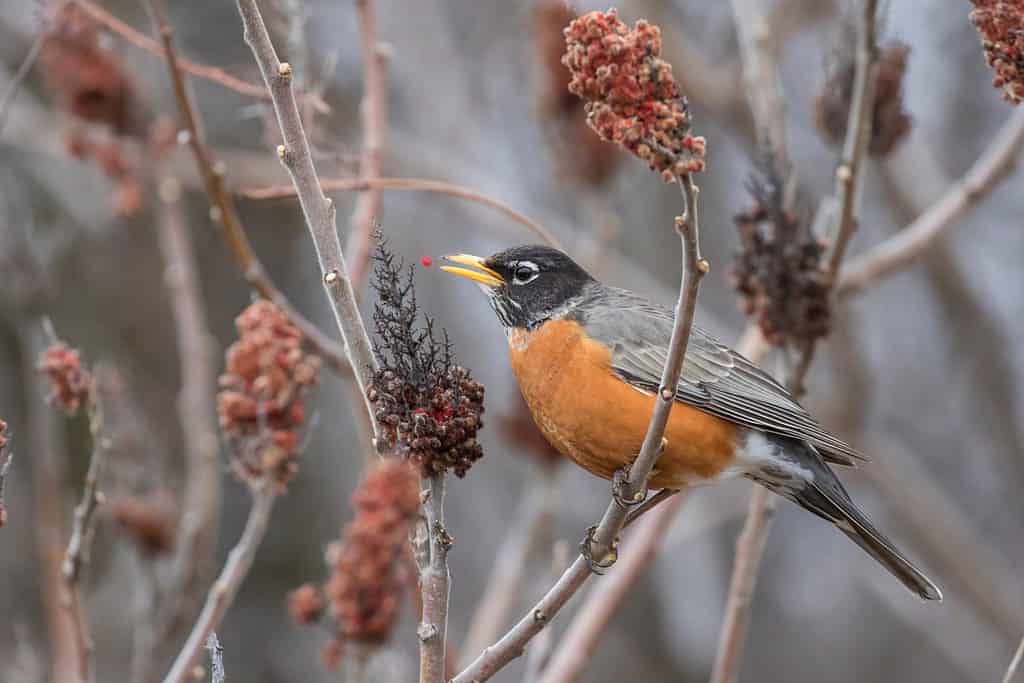
Male American robins have reddish-orange feathers on their chests, gray wings and tails, and darker gray heads.
©Mircea Costina/Shutterstock.com
We put these three vibrant colors in one group because they tend to occur in similar amounts. Many birds even have combinations of these colors in their feathers. Some species with red feathers, such as the American robin, have different coloring for males and females. Male robins have reddish-orange coloring on their breast. Females, on the other hand, are brown.
Green
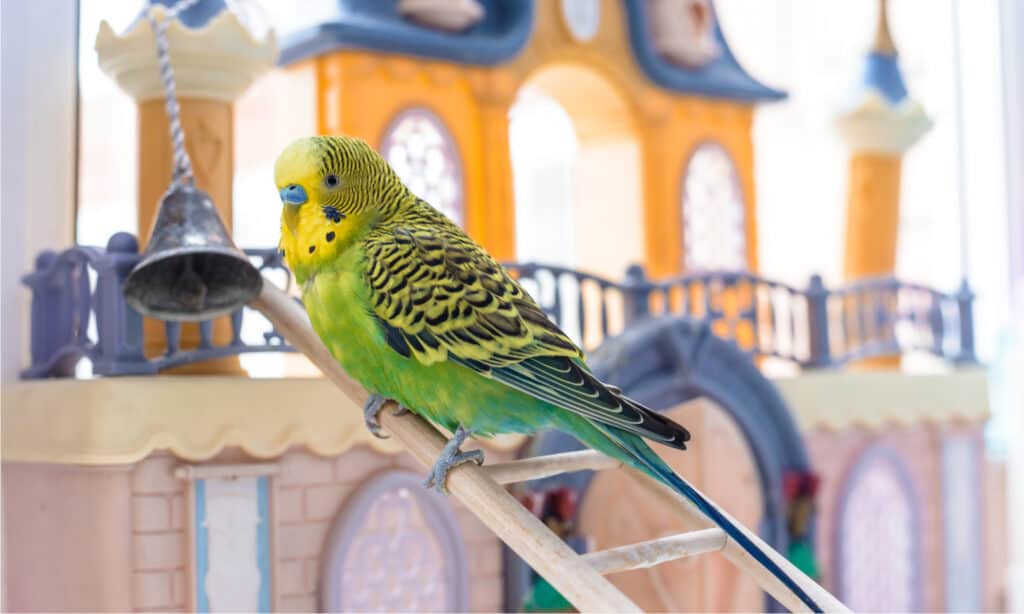
Parakeets are a type of parrot and are popular as pets.
©Vyaseleva Elena/Shutterstock.com
Birds that live in areas with plenty of vegetation benefit from the camouflage that green feathers provide. They can be brilliantly bright or more subdued. Keep in mind that green coloring is the result of some porphyrin pigments. Some varieties are also due to structural coloration. There are many varieties of green and some species with sections of green along with other colors on their wings, bodies, tails, or heads. Green is one of the more common colors for parakeet feathers. It is also seen in other parrot species.
Black, Gray, and Brown
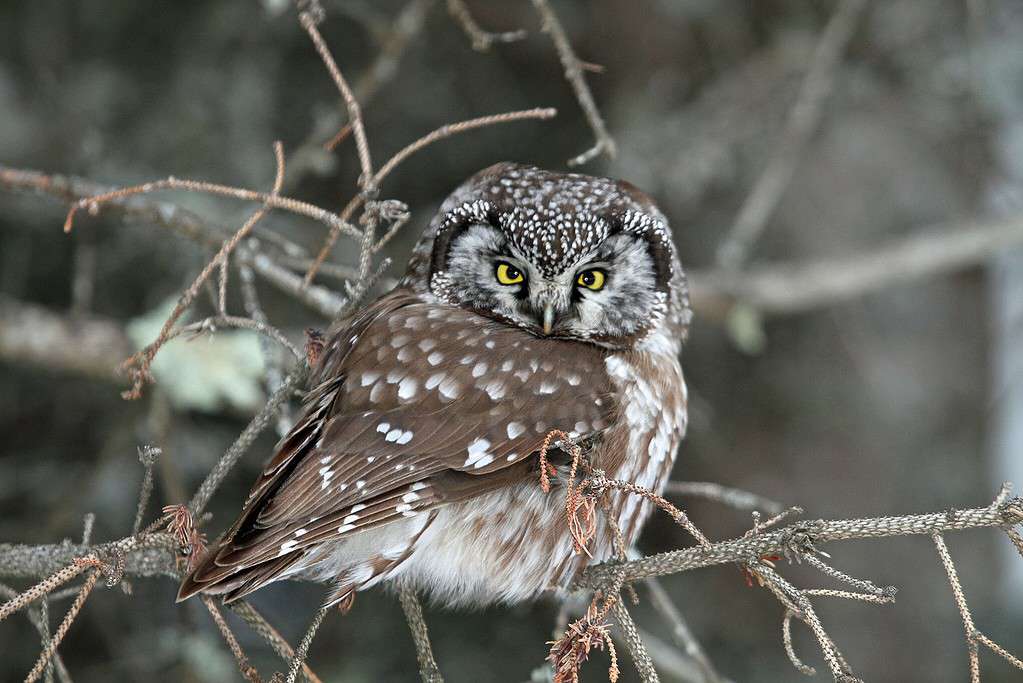
An owl’s brown feathers help it blend into its environment.
©Greg Schechter / CC BY 2.0 – License
These colors often occur in coordination with each other or even other brighter colors. Some bird species with brown feathers exhibit sexual dichromatism. This is the term for different coloring in male and female birds within the same species. Males tend to be brighter and have more brilliant colors. This can be to attract a mate or just get more attention. Females, on the other hand, are often brown, gray, and black (or a combination of these). This helps them blend into their surroundings while they incubate eggs.
Other species, especially owls, have brown, gray, and black feathers in both males and females. These birds may rely on this camouflage to stay hidden from predators during the day when they sleep. It can be difficult to distinguish a particular species from another, especially when they are of similar size and shape and they both have hard-to-spot brown feathers.
The photo featured at the top of this post is © Evgeny Sergeev/iStock via Getty Images
Thank you for reading! Have some feedback for us? Contact the AZ Animals editorial team.



